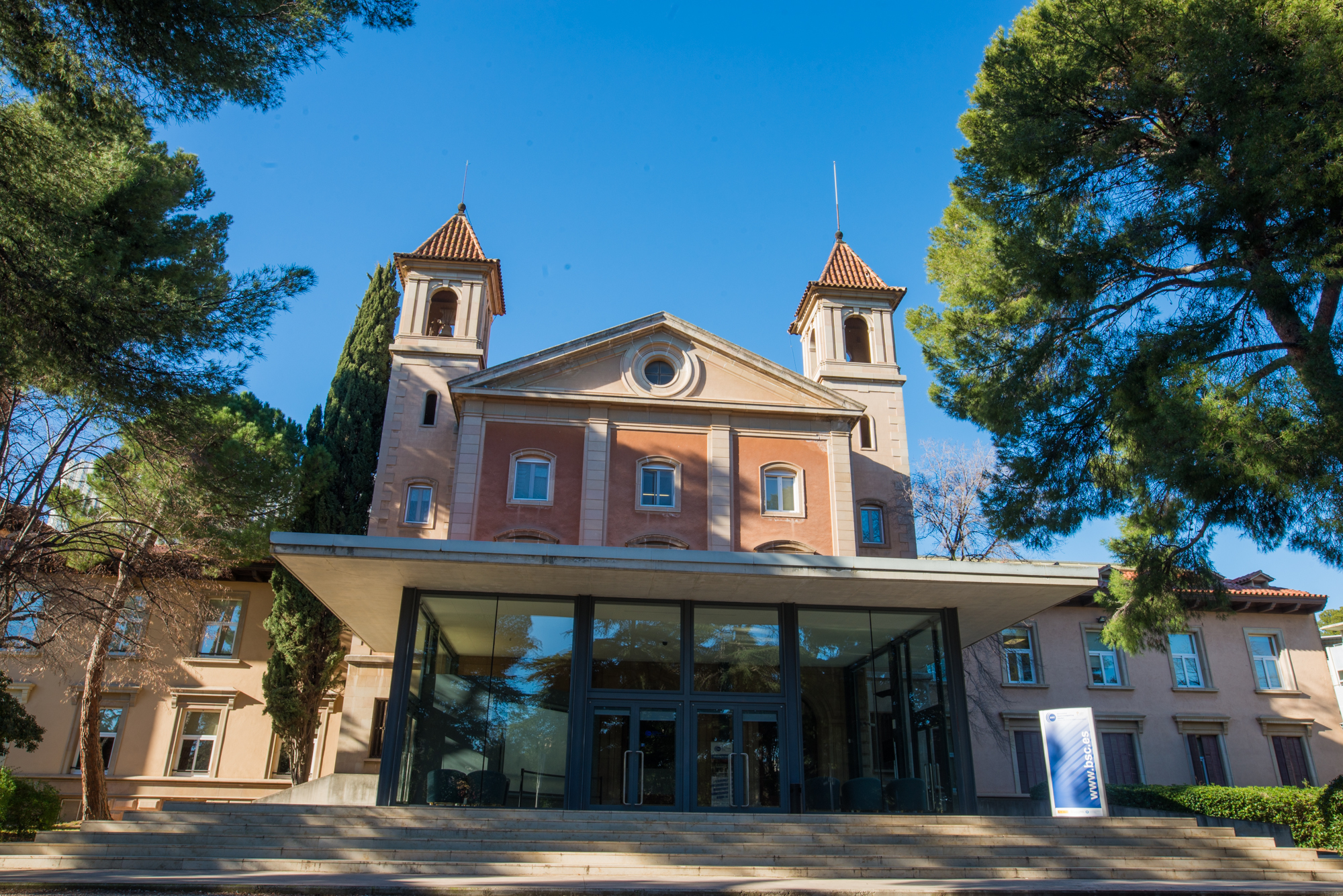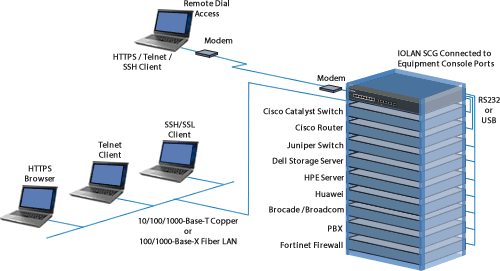Scalable Network Attached Solutions for Modern Infrastructure
Cyber Security Insights for Resilient Digital Defence
Data Centres
Scalable Network Attached Solutions for Modern Infrastructure
Infinidat expands guarantee programme
Infinidat has announced an expansion of its guaranteed Service Level Agreement (SLA) programme. Infinidat is making available the industry’s first cyber storage guarantee for recovery on primary storage - the InfiniSafe Cyber Storage guarantee. This ensures that enterprises and service providers recover and restore their data at near-instantaneous speed in the wake of a cyber attack by using a guaranteed immutable snapshot dataset with a guaranteed recovery time of one minute or less. The company is also announcing a new performance guarantee across its InfiniBox platforms. The new guarantees join Infinidat’s existing 100% availability guarantee, which was announced in 2019.
“At our core, Infinidat consistently delivers unmatched enterprise SLAs and a differentiated customer experience that sets us apart and exemplifies our unconventional approach,” says Phil Bullinger, CEO, Infinidat. “With the introduction of our InfiniSafe Cyber Storage guarantee, our assured SLAs now span across availability, performance and recovery operations to meet the most demanding data centre requirements, demonstrating that our customers are always at the centre of what we do as a market leader.”
Cyber resilient storage is among the most important and highly demanded requirements of enterprises today to ensure exceptional cyber security and combat cyber attacks across the entire storage estate and data infrastructure. In recent research, IDC found that 87% of organisations impacted by ransomware in the past year had to pay a ransom to recover their data. Infinidat helps organisations avoid having to pay the ransom, yet still retrieve their data, uncompromised and intact, through rapid cyber recovery. The company recently extended cyber resilience to its InfiniBox and InfiniBox SSA II enterprise storage platforms with the InfiniSafe Reference Architecture, allowing Infinidat to provide its immutability snapshot guarantee and the recovery time of immutable snapshots at one minute or less.
Infinidat says that the InfiniBox and InfiniBox SSA II platforms for enterprise primary storage deployments are not only the most cyber resilient and reliable storage solutions in the industry, but also the highest performing. Given the powerful and consistent performance of the InfiniBox platforms, Infinidat is adding a performance guarantee. This performance guarantee assures customers that Infinidat’s primary storage platforms will outperform their existing storage products in their production environments. Infinidat works closely with customers to identify their specific needs for performance and analyse the requirements for each specific workload. Once the workload performance requirements are profiled, Infinidat will provide service level agreements aligned with the specific performance requirements profile and analysis of those workloads.
The InfiniBox SSA II is said to provide lower latency than any other comparable enterprise storage platform in the industry, delivering an unprecedented 35 microseconds of latency. This enables customers to have optimal application and workload performance, as well as substantial storage consolidation driving increased efficiency and reduced total cost.
From the earliest InfiniBox installations, Infinidat has earned an unprecedented reputation for product quality and reliability from an enterprise community that has zero tolerance for downtime. Every system is designed for zero downtime over the course of its lifecycle and comes with a 100% availability guarantee.
All four of the Infinidat SLA guarantees are available across all of Infinidat’s consumption models: FLX (Infinidat’s storage-as-a-service offering), Elastic Pricing, and traditional purchase.
Beatrice - 11 August 2022
Data Centres
Hyperscale Data Centres: Scale, Speed & Strategy
News
Scalable Network Attached Solutions for Modern Infrastructure
Infinidat’s InfiniBox SSA II receives award at the Flash Memory Summit 2022
Infinidat has announced that the InfiniBox SSA II has received a Best of Show Award at the Flash Memory Summit 2022. As the next generation solid state array in the company’s broad portfolio of enterprise storage and cyber resilient solutions, the InfiniBox SSA II was recognised as the Most Innovative Hyperscaler Implementation, demonstrating that the InfiniBox SSA II meets the stringent requirements of the hyperscaler, Cloud Service Provider (CSP), Managed Service Provider (MSP), and Managed Hosting Provider (MHP) customer base. The InfiniBox SSA II stands as the industry’s fastest all-flash storage array with unprecedented low latency and unmatched cyber resilience.
“Winning the Most Innovative Hyperscaler Implementation Award at the Flash Memory Summit is another validation that Infinidat has taken the all-flash storage market by storm with our continual innovation,” says Eric Herzog, CMO at Infinidat. “For the most demanding applications and workloads, the InfiniBox SSA II is a state-of-the-art storage solution built from the ground up with the highest levels of enterprise-class performance, availability, and cyber resilience at scale, providing an ideal solution for hyperscale, CSP, MSP, and MHP deployments.”
“Hyperscalers, CSPs, MSPs, and MHPs set the bar very high for service level objectives as they provide Storage-as-a-Service (STaaS) for a fast-growing customer base which demands cyber resiliency and continuous access to the storage resources,” says Jay Kramer, Chairman of the Awards Program and President of Network Storage Advisors. “We are proud to recognise Infinidat for its InfiniBox SSA II, showcasing InfiniOps autonomous automation coupled with InfiniVerse AI operational set-it-and-forget-it simplicity. The solution not only exceeds its customer’s SLAs but also provides a 100% availability guarantee, unmatched real-world application performance, and powerful cyber storage resilience.”
Launched in April 2022, the InfiniBox SSA II continues to raise the bar in enterprise storage performance, utilising 100% solid state technology for persistent storage, which, when coupled with Neural Cache and the company’s software advancements with autonomous automation, takes groundbreaking performance to the next level. The new InfiniBox SSA II delivers lower latency than any other comparable enterprise storage platform in the industry, delivering an unprecedented 35 microseconds of latency.
In addition, the SSA II delivers the same 100% availability, white glove service, and lower total cost of ownership that defines the industry acclaimed InfiniBox customer experience. The company offers a comprehensive portfolio of enterprise storage and cyber resilient solutions powered by a common software architecture across the business’ InfiniBox, InfiniBox SSA II and InfiniGuard platforms, including Infinidat’s cyber storage resiliency solution - InfiniSafe.
The InfiniBox SSA II is available with Infinidat’s flexible consumption options, as are all of Infinidat’s solutions, including Storage-as-a-Service with Infinidat’s FLX program, capacity on demand with Infinidat’s Elastic Pricing model, and traditional purchase.
Beatrice - 8 August 2022
Data Centre Security: Protecting Infrastructure from Physical and Cyber Threats
Infrastructure Management for Modern Data Centres
Scalable Network Attached Solutions for Modern Infrastructure
Time for a coffee? It’s time to discuss five key topics influencing enterprise storage
By Gareth Beanland, UK and Ireland Country Manager at Infinidat
As we all head back to office life, even if just for a small proportion of the working week, old customs, like strategy conversations in the kitchen or over a cup of coffee, are returning. A lot has changed in the workplace and these topical chit-chats may seem like a quaint relic of a long forgotten, pre-COVID age, but they are as important as ever, if not more so. If you are thinking about long-term IT expenditures, cost of ownership reduction and what to do about enterprise storage in the next three to five years, here are five good conversation starters to get things going.
Can enterprise storage help guard against cyber-attacks?
Yes, and the key issue to discuss is consistency. Due to the cyber threats of ransomware and malware, it is imperative for enterprises to implement modern data protection and cyber resilience practices and capabilities across their primary and secondary storage estates. Features to be adding include immutable snapshots, logical air gapping, fenced forensic environments and virtually instantaneous recovery. Cyber criminals are targeting data backup as well as primary storage, so the secondary storage needs to be secure and robust enough to withstand attacks too.
Remember, it is not a question of if you will suffer a cyber-attack, because cyber-attacks are pretty much a given these days, but when and how often. When you are considering enterprise storage technology to guard against a cyber-attack, look for solutions with purpose-built backup appliances for your secondary storage environments, to nullify ransomware and malware with automated functions. This will ensure business continuity and protect some of your company’s biggest strategic assets - data. It means that when a hacker declares they have taken your data ransom, you can go back to the immutable snapshots and simply ignore the cyber-criminal. There will be no need to pay any ‘ransom’, as you have a good copy of the data to recover.
Can you detect when data storage is overly complex?
Yes, and the key issue to discuss is storage consolidation. When enterprise storage becomes overly complex, your data ends up in silos and becomes costly to utilise and manage. This is a common nightmare and one that storage administrators too often tolerate. By consolidating your storage arrays, you not only reduce the number you have to manage, but also reduce the number of independent silos that require management, dramatically simplifying the entire data process.
Can you tell if a storage solution provider can scale adequately?
Yes, look at the company they keep. One of the easiest and best ways to vet the capabilities of an enterprise storage solution provider is to see if they count any Cloud Service Providers (CSPs) and Managed Service Providers (MSPs) as customers. It shows robustness and technical resilience if CSPs and MSPs trust a storage vendor to this degree. If CSPs and MSPs are relying on the vendor’s storage platform for their own clients, then CIOs and IT decision-makers can be confident that their storage capabilities are top-notch and proven. It will mean that 90,000 back-ups per day are being run using that storage technology instead of only 30,000. As an additional check, look for storage providers who list CSPs, MSPs, and clients in highly regulated markets like banking, healthcare, and insurance. They will inevitably be giving their storage suppliers stringent SLA requirements and you can be confident they will meet them.
How can we shift from managing infrastructure to focus on applications?
There has been a shift within enterprise IT to focus on managing applications rather than managing the infrastructure. Many CIOs now talk about adopting a ‘set-it-and-forget-it’ approach, which seems to be the preferred mode to reinforce this focus on applications. They want their storage systems to be automated and autonomous.
To be able to benefit from the same level of comfort and avoid painful and extensive ‘performance tuning’, seek storage vendors offering intelligent, Neural Cache functionalities. This means the system can employ a form of machine learning, it will enable automated adjustments to ongoing changes in the application infrastructure and reflects a set-it-and-forget-it mentality. To go a stage further, look out for support for Red Hat’s Ansible Framework, which allows storage admins to let the DevOps and operations teams allocate and configure storage within the parameters they have established in Ansible, allowing those teams to work with enterprise storage platforms without causing any problems.
Can we reduce CAPEX and OPEX by consolidating our storage?
Yes. This is one of today’s biggest trends in enterprise storage, because companies are always looking to reduce expenditures and storage can be one of the most expensive pieces of their data centre infrastructure budgets. This is particularly exacerbated in an era where data and storage growth is exponential. When a data centre uses vast sets of arrays, it means there is a need for more rack space, larger data centres, more power consumption, more cooling, and more daily operational management. This is all highly resource and cost intensive. By consolidating storage, both CAPEX and OPEX can be dramatically reduced. A set-it-and-forget-it ease of use approach to your storage environment also lowers operational manpower. There is no need for either RAID groups or LUNs and no requirement to ‘play’ with the storage to optimise application performance needs or to perform any other configuration.
Technology has liberated us to remote working. As the COVID pandemic has proven, it does work, but there’s nothing like the spontaneous interactions that take place in an office environment for sparking new ideas, especially when it comes to enterprise IT strategy. Informal conversations over a cup of coffee are hugely valuable for sounding out advice and new ideas or discussing collaboration opportunities. Ultimately, it leads to better decision-making and increased efficiency and effectiveness.
Beatrice - 5 August 2022
Data
Data Centres
Scalable Network Attached Solutions for Modern Infrastructure
Uncategorised
Dell Technologies to provide next generation business continuity for hybrid IT
Schneider Electric has teamed up with strategic partner Dell Technologies to deliver an automated shutdown solution that is ideal for hyperconverged infrastructure. It focuses on the seamless integration of APC PowerChute Network Shutdown with Dell VxRail Clusters by communicating over the network with the APC UPS (Uninterruptible Power Supply).
Together, Dell and Schneider Electric are working on the next generation of ensuring business continuity for sprawling IT infrastructure with products that protect against unplanned power events. Developed in full collaboration with Dell Technologies, this new offer is part of Schneider Electric’s modernised EcoStruxure IT software, which is designed to make hybrid IT infrastructure more resilient, secure, and sustainable.
The modernisation of EcoStruxure IT addresses how Data Centre Infrastructure Management (DCIM) has changed tremendously since it first emerged as a software category. Today’s hybrid IT environment is challenging even the most sophisticated CIO organisations. We call this trend DCIM 3.0. Earlier this month, Schneider Electric announced that it has evolved DCIM from individual data centres to cover the full spectrum of sprawling, hybrid IT. The company is investing in EcoStruxure IT to provide more capability, flexibility, and deployment options than ever before for enterprises and colocation facilities everywhere in the world.
Avoid corrupt data and damaged hardware
The integration of APC PowerChute with Dell VxRail Clusters is part of Schneider Electric's ongoing effort to reduce the complexity of the hybrid IT environment. When power is interrupted and UPSs extend past their battery runtime, the company's partners can’t just flip a switch and shut down operations. They follow a protocol. And if they don’t have trained staff on site, they could be looking at the expensive possibility of lost work, corrupt data, and damaged hardware at their traditional data centres and also at hundreds or thousands of unattended distributed sites.
But PowerChute integrated directly with the Dell VxRail API enables a safe shutdown of virtual machines followed by the VxRail cluster including hosts; often referred to as a graceful shutdown with no loss of work, no data corruption, and no hardware damage. This new offer includes the option for automatic restart so when the power returns, your systems return also, ensuring minimal downtime.
Simple and fast for partners to deploy with easy integration
Dell Technologies and Schneider Electric are making business continuity easy for its partners because they have figured out the behind-the-scenes technology to make this new product simple and fast for its partners to deploy with easy integration into their systems. PowerChute has been revolutionised in the past few years and in addition to a graceful shutdown and restart, it saves space and reduces hardware needs because you don’t need to deploy it on a separate machine.
We live in a time of complex, distributed IT architectures and this new offer is another way Schneider Electric and Dell Technologies are joining forces to leverage complimentary portfolios of products and services to create innovative, end-to-end technology solutions that are easy to purchase, deploy, and operate. To learn more, please watch this helpful video, visit our Dell Technologies Alliance page, and learn more about our EcoStruxure IT software.
Carly Weller - 20 July 2022
Hyperscale Data Centres: Scale, Speed & Strategy
Insights into Data Centre Investment & Market Growth
News
Scalable Network Attached Solutions for Modern Infrastructure
Infinidat advances partner portal and expands channel sales with STaaS
Infinidat has announced new moves to advance its strong position in partnering, supporting and co-selling with channel partners, accelerating adoption of storage-as-a-service (STaaS), and significantly enhancing partner sales enablement. Infinidat will roll out a new global version of its partner portal in July, rebuilt from the ground up, to train and equip solution providers worldwide to grow their revenue at a faster pace and deliver their customers true business and technical value with Infinidat’s platforms. In addition, the company announced that it has integrated Infinidat’s STaaS solution into Arrow Electronics’ ArrowSphere in North America.
“Our latest investments for our partners to have best-in-class tools and access to leading-edge ecosystems reflect our ongoing, strong commitment to our channel-centric model for go-to-market execution,” says Eric Herzog, CMO at Infinidat. “We’re streamlining and simplifying the partner experience to boost channel participation and success. We’re making it easier for solution providers to sell Infinidat’s industry acclaimed enterprise solution portfolio, including enhanced AIOps capabilities, industry-leading real world application performance with the lowest latency, and the rollout of our innovative InfiniSafe technology across our platforms for groundbreaking levels of cyber resilience, all with the choice of flexible consumption models.”
Partner portal gets a makeover
Infinidat has rebuilt its partner portal to deliver an enhanced experience for the channel. It is designed to catapult partners forward with dynamic and relevant information to enable competitive advantages. The new portal features the following:
Easier navigation to simplify use of the knowledgebase and enablement tools in the portal in support of new and expanding market opportunities.Refreshed, modernised, and expanded content, including detailed information about the new InfiniSafe technology on InfiniBox and InfiniGuard. In addition, localised content in different languages for its global partner ecosystem.Streamlined training experience to make partners more technically adept to sell Infinidat’s portfolio for mutual benefits. Accreditation, also, continues to be part of the program.
“We have been a strong partner of Infinidat for several years, and their partner support, programs, and portal have been top-notch,” says Jan Veith, Sales Director, Hansen & Gieraths IT Solutions GmbH. “We are very excited about the new, streamlined Infinidat partner portal and how it will help us grow our business, deliver better solutions leveraging Infinidat’s award-winning platforms, and keep our teams up-to-date on all things Infinidat.”
Infinidat has worked with third-party vendors to bring state-of-the-art capabilities into its new portal for channel partners. One of them is Highspot, the sales enablement platform that increases the performance of sales teams by bridging the gap between strategy and execution.
“We’re proud that Infinidat has chosen Highspot's sales enablement platform to deliver the right resources to their channel partners at the right time within their new partner portal,” says Gwen Sheridan, Vice President of Customer Services, Highspot. “With Highspot, Infinidat’s partners can utilise rich content, guidance and insights to effectively engage buyers and improve sales performance.”
Infinidat’s STaaS solution integrates into ArrowSphere in North America
Arrow’s ArrowSphere platform helps channel partners manage, differentiate, and scale their cloud business. Its marketplace includes leading hyperscale providers, as well as public and private IaaS, PaaS, SaaS, HaaS and cloud software offerings, such as Infinidat’s STaaS.
“Infinidat is creating more value for its partners by leveraging ArrowSphere to more easily deliver to customers Infinidat’s storage-as-a-service offering,” comments Shannon McWilliams, Vice President of Supplier Alliances, Arrow. “Storage-as-a-service is a significant revenue growth opportunity for channel partners. Providing a new option for integration, automation, and streamlined ordering of enterprise storage, Infinidat’s STaaS now joins the increasing list of solutions available ‘as a service’ through Arrow’s award-winning cloud management platform, ArrowSphere.”
Beatrice - 27 June 2022
Data Centre Build News & Insights
Data Centre Projects: Infrastructure Builds, Innovations & Updates
News
Scalable Network Attached Solutions for Modern Infrastructure
CloudStratex transforms Munich Re’s tech potential with CMDB technology
CloudStratex has celebrated the major milestone of delivering single-pane-of-glass visibility to Munich Re’s IT ecosystem.
Its intervention has provided automated access to Munich Re’s key assets and altered the firm’s approach from manual spreadsheets to cutting-edge operational processes, achieved in record time.
Since its foundation in 1880, Munich Re’s reputation as a global specialist in risk has made the firm a sought-after partner organisation for a wealth of businesses and institutions.
Given its status as a leading insurance firm with its finger on the pulse of technological change and transformation, Munich Re recognised the need to upgrade its IT ecosystem with clear visibility over its various configuration items.
In addition, the new CMDB allows for automated access to all assets and data sources used across the group – a substantial improvement on the variegated individual databases and manually maintained spreadsheets that comprised Munich Re’s previous system.
The benefits delivered by CloudStratex and ServiceNow’s CMDB aren’t limited to efficiency, but also include significant strides in terms of regulatory compliance.
Munich Re understood and embraced the increased resilience represented by a strong CMDB implementation, which is particularly valuable amidst the complex regulatory environment created by BaFin.
CloudStratex was able to complete the project six months ahead of schedule, delivering results in nine months as opposed to the projected 15.
This swift delivery is partially attributable to CloudStratex’s deep understanding and configuration potential of ITOM Discovery, which meant that, of the various critical components which comprised Munich Re’s IT environment, the consultancy discovered 99% automatically.
Duncan Docherty, Chief Technology Officer at CloudStratex, says: “The new CMDB is clean, fresh, and free of customisation, providing a clear, strong, usable baseline with out-of-the-box tools delivering major improvements. It’s a massive step forward on the ServiceNow journey we’re taking Munich Re on.”
Beatrice - 23 June 2022
Data Centres
Insights into Data Centre Investment & Market Growth
News
Scalable Network Attached Solutions for Modern Infrastructure
The Barcelona Supercomputing Centre and Lenovo announce partnership
A research agreement has now been signed between the Barcelona Supercomputing Centre and Lenovo to advance research in multiple Spanish and EU priority sectors for high-performance computing. Through this collaboration, Lenovo will invest $7 million over three years to advance precision medicine through the use of supercomputing, the design and development of open-source European chips and the creation of more energy-sustainable supercomputers and data centres.
The event took place at the BSC-CNS headquarters with its Director, Mateo Valero, its Deputy Director, Josep Maria Martorell, and Executive Vice President of Lenovo and President of Lenovo Infrastructure Solutions Group, Kirk Skaugen.
Mateo Valero, Director of the BSC-CNS states: “I am very proud of this important collaboration with Lenovo as we continue our longstanding work together tackling the great challenges of these priority lines of research from the Spanish and European Commission's agenda. This research collaboration will generate significant returns for the region, not only human and scientific, but also technological and economic."
Noam Rosen, EMEA Director, HPC & AI at Lenovo says, “We are excited to announce the agreement to jointly develop novel European supercomputing technologies for the exascale era, which extends from our six year partnership with BSC. Our shared goal is to embrace open architecture to support scientists and researchers with smarter, more efficient and sustainable supercomputing platforms. This agreement, and our investment contribution, are just the latest examples of Lenovo’s ongoing commitment to Europe, joining our new manufacturing facility in Hungary and the AI Innovation Centre Germany. Lenovo is passionate about helping researchers at BSC solve one of humanity’s greatest challenges and is proud to support BSC’s leadership driving European innovation in HPC.”
Supercomputing: key to advancing precision medicine
The exponential increase in the production of genomic data produces multiple petabytes of information, requiring the use of high-performance computing (HPC) resources for analysis, such as those of the MareNostrum supercomputer at the BSC-CNS. The efficient analysis of large-scale genomic data will be key to advancing precision medicine and the generation of new treatments against diseases such as cancer. Thus, one of the collaboration projects between Lenovo and the BSC-CNS is aimed at improving and accelerating precision medicine using supercomputing.
In this context, the BSC-CNS team, led by the researcher Miquel Moretó, will study genomic analysis algorithms to design new accelerators that will be integrated into the HPC platforms of the future that will serve to improve the efficiency of these highly sophisticated analyses. The algorithms created and optimised by the BSC-CNS team will target GOAST (Genomics Optimisation and Scalability Tool) developed by Lenovo to optimise and improve genomic analysis. In addition, these analysis tools will be extended to other disciplines such as epigenetics, metagenomics, microbiology, virology, and other areas of life and health sciences.
More sustainable and energy-efficient supercomputers
The growing need to provide researchers with more powerful supercomputers and data centres requires considerable increases in energy consumption, which is no longer sustainable. An estimate of the consumption of some of the most powerful supercomputers in the world can be around 25MW, which is equivalent to the consumption of a medium-sized city. The joint research between BSC-CNS and Lenovo will seek to build more energy-efficient, sustainable and lower-cost supercomputers and data centres. The group (coordinated by the researcher Julita Corbalán) will lead this challenge at the BSC-CNS. In 2016, this team developed, together with Lenovo, new system software (EAR, Energy Aware Runtime) for the optimisation and energy efficiency of HPC tools, and together with the UPC launched the spin-off EAS (Energy Aware Solutions) to continue advancing in this direction.
This new research project will seek more powerful, flexible, and robust systems for energy-saving within infrastructure solutions, such as software for energy optimisation and management. They will look to incorporate new technologies developed by INTEL within the algorithms recently developed by Corbalán's team. The project will also seek to extend and monitor energy expenditure to the entire infrastructure architecture.
European autonomy in chip design
In 2019, the BSC announced the creation of the European Laboratory for Open Computing Architecture (LOCA), whose mission is to design and develop chip technology within Europe, based on open -RISC-V instruction set architecture. This laboratory, led by researcher John D. Davis, was born as a collaborative project with companies, foundations, and academic institutions to create open-source hardware that guarantees transparency, competitiveness, and technological autonomy. The incorporation of Lenovo in this project will help facilitate progress towards this priority objective for Europe. In the same context of LOCA, the BSC also recently announced the creation of a joint laboratory with INTEL to develop chips with European technology.
The collaboration between BSC-CNS and Lenovo is the continuation of joint work that dates to 2016, aimed at studying the use of artificial intelligence in the field of precision medicine or the sustainability of supercomputers, amongst others.
Beatrice - 22 June 2022
News
Scalable Network Attached Solutions for Modern Infrastructure
Perle IOLAN Console Servers are top-of-rack in Bielefeld University
The Bielefeld University IT Service Centre (BITS) aspires to have its IT network infrastructure recognised as one of the most modern data centres in Germany. A key factor to achieving this goal will be measured by their ability to maintain uninterrupted user access to the systems, applications, and information on the network.
Like other corporations and education institutions with distributed IT environments, the university has equipment dispersed in multiple ‘tech rooms’ throughout the campus. This means that on-site management of the network is complicated and time-consuming if IT staff must physically be in front of the server, switch, or application that requires attention.
To solve this problem, BITS Network Engineers implemented an Out-of-Band Management (OOBM) Network. An IOLAN Console Server installed at the top of each rack now provides network administrators an alternate path to remotely access Cisco and HP switches, WLAN controllers, and VPN servers, as if they are locally connected through a direct serial console port connection, even if the network is down. Disruption and downtime have been minimised due to better visibility of the physical environment and status of equipment.
A member of the BITS Network Team comments, “Above all, we are impressed by the stability of the IOLAN Console Servers during operation. As far as I can remember, the IOLANs have been running without a reboot ever being necessary. We are very satisfied.”
Beatrice - 15 June 2022
Scalable Network Attached Solutions for Modern Infrastructure
Give us 20 seconds, and we’ll give you the answer to IT uncertainty
IT is a serious matter…
...but, let's face it, there are some strange things that people in IT face every day.
That’s what IT Happens is all about. It’s a quick look at how nothing in IT is certain. But it can be.
See how Schneider Electric – through the power of APC offerings and EcoStruxure IT software – can provide the resilience, reliability, and sustainability you need. That’s no joke.
https://www.youtube.com/watch?v=l8eByJ5eSNs
Carly Weller - 17 May 2022
Data Centre Operations: Optimising Infrastructure for Performance and Reliability
Data Centres
Edge Computing in Modern Data Centre Operations
Scalable Network Attached Solutions for Modern Infrastructure
EkkoSense extends data centre optimisation support to edge sites
EkkoSense has extended its EkkoSoft Critical solution to ensure full support for edge sites. This new capability will provide data centre operators with the widest possible view of their critical facilities’ performance - from the smallest server room through to the largest rooms. This means that, for the first time, operations teams can gain real-time access to power, cooling and space optimisation data from across their entire data centre estate.
EkkoSense’s new edge site monitoring and optimisation solution integrates previously unused data sources to support edge facilities that were either left unmonitored or only tracked by generalised Building Management Systems (BMS). Edge sites now covered by EkkoSoft Critical include single or smaller server rooms, hub sites and telecom equipment rooms. Edge site data can now be viewed, analysed and optimised using EkkoSoft Critical’s intuitive single pane of glass enterprise estate performance visualisations.
“With analyst firms now estimating that soon more than half of enterprise-generated data will be either created or processed outside of the data centre or the cloud, it’s essential for organisations to have much greater insight into their growing number of edge facilities,” says Paul Milburn, EkkoSense’s Chief Product Officer. “Now we’re able to not only support operations teams with enterprise-wide visibility, but also deliver the thermal, power and capacity management support they need to run remote sites more efficiently while also supporting greater IT loads.”
Unlike traditional remote BMS solutions that can only respond to hard faults, the EkkoSense solution features more flexible alerting with user permission configuration. This effectively delivers a more comprehensive ‘mini-BMS’ alternative at around a tenth of the cost of more complex BMS solutions.
EkkoSense software for edge is particularly easy to deploy, with a starter kit package of wireless sensors and the EkkoHub Wireless Data Receiver that supports self-installation by non-IT professionals. Each EkkoHub can support up to 200 wireless sensors and up to 20 Modbus/SNMP devices in direct mode, ensuring support and scalability for a broad range of edge sites from single server rooms through to larger hub sites or equipment rooms.
Beatrice - 13 May 2022

Head office & Accounts:
Suite 14, 6-8 Revenge Road, Lordswood
Kent ME5 8UD
T: +44 (0)1634 673163
F: +44 (0)1634 673173









